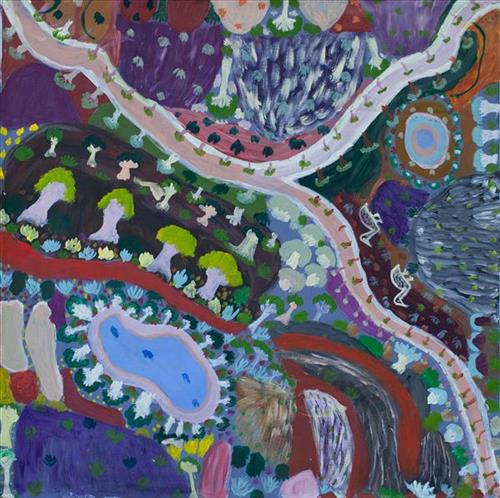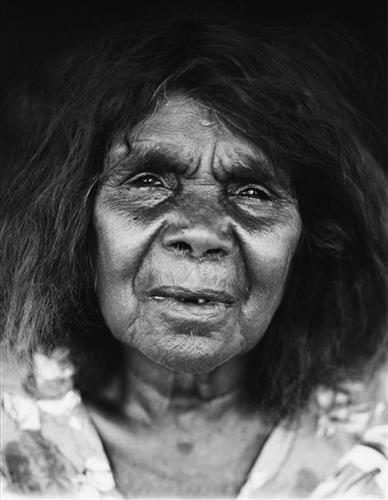111581939881
Nullagine River
“Good spring, lots of fish and rockholes too, and a big jila (snake). There are three rivers all around Nullagine, all join the Nullagine river. You can swim here, there’s lots of hunting. We go camp in the river, lovely river. Take the kids for holiday, play around, climb in the trees.
Near Nullagine one man always chasing the Seven Sisters. In our Country, old man is standing in the rock. The other side is trees- the ladies. That man he still standing there, hanging on. He went from Nullagine to Parnngurr, he met them there and kept going to the central desert, chasing the sisters.”
– Jatarr Lily Long
Nullagine, an old goldrush town, and the adjacent Irrungadji (Yirrangadji) Aboriginal community are located at the heart of Western Australia’s Pilbara region. Both the town and Community lie along the Nullagine River, the site of many Jukurrpa (Dreaming) narratives including that of the Minyipuru (Jakulyukulyu, Seven Sisters). As described by Jatarr, the Minyipuru passed through this area, and carved on a rock just outside of Nullagine is Yurla, the relentless pursuer of the Minyipuru, eternally watching the women.
Minyipuru is a key creation narrative for Martu, Ngaanyatjarra, Pitjantjatjara and Yankunytjatjara people that is associated with the seasonal Pleiades star constellation. Beginning in Roebourne on the west coast of Western Australia, the story morphs in its movement eastward across the land, following a group of women as they walk, dance, and even fly from waterhole to waterhole. As they travel the women camp, sing, wash, dance and gather food, leaving markers in the landscape and creating landforms that remain to this day, such as groupings of rocks and trees, grinding stones and seeds. During the entirety of their journey the women are pursued by the lustful old man, Yurla, although interactions with other animals, groups of men, and spirit beings are also chronicled in the narrative.




